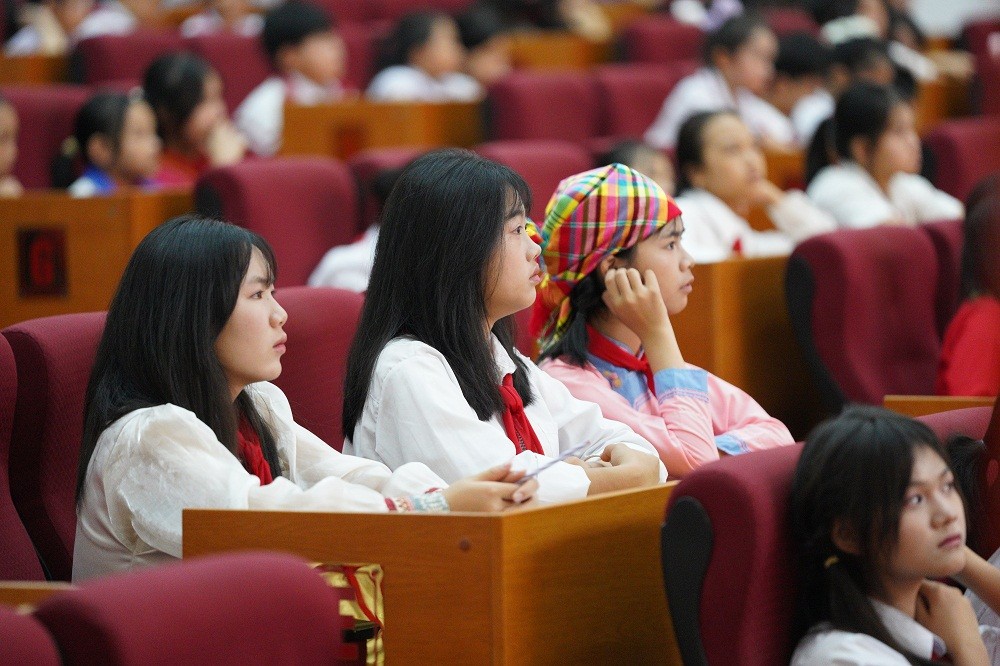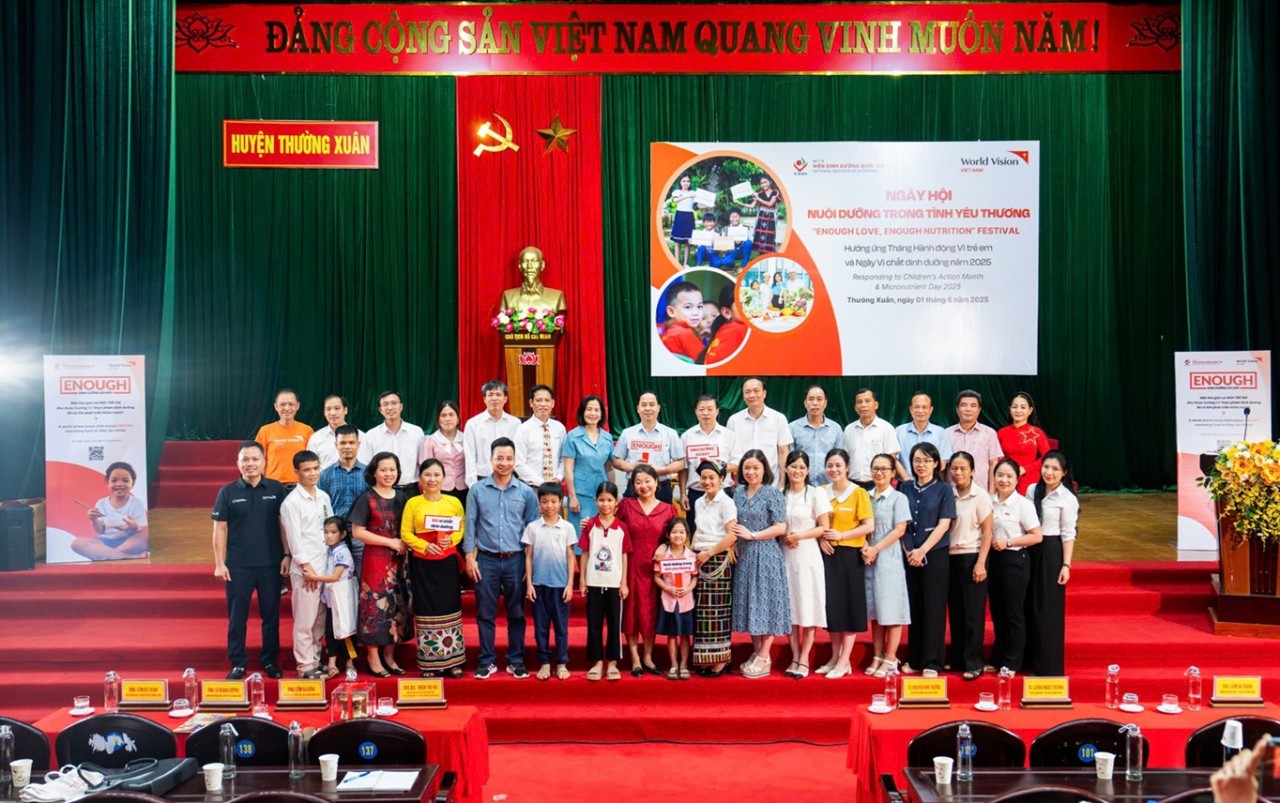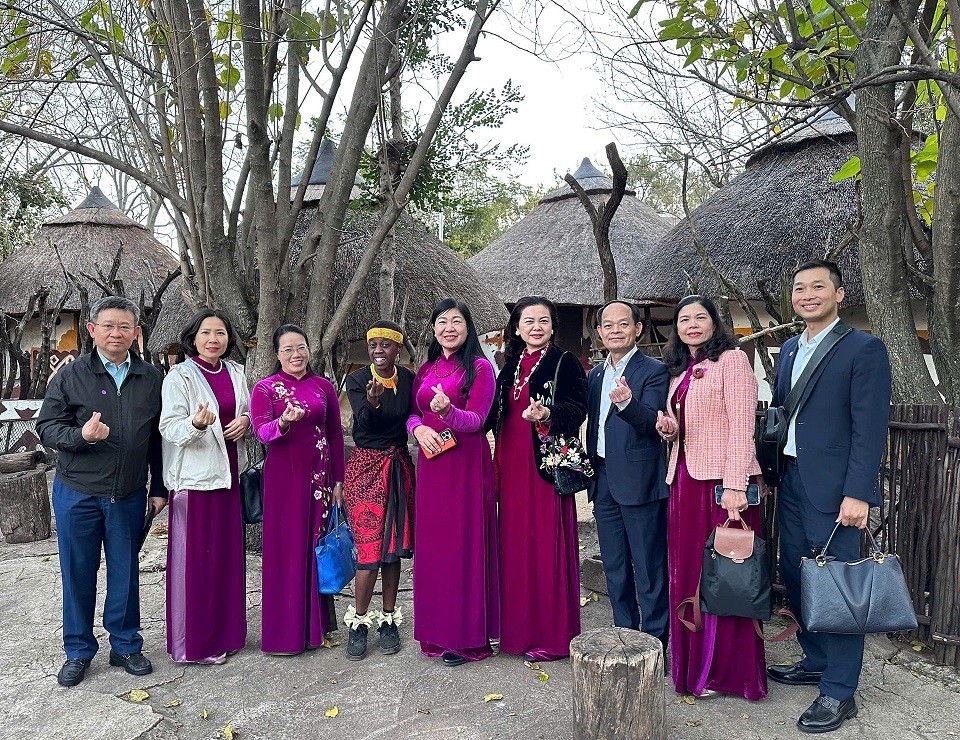Morocco Gate renovated to strengthen Vietnam-Morocco friendship
The Gate of Morocco in Tan Linh commune, Ba Vi district, a symbol of Vietnam-Morocco friendship, has been renovated.
Vice Chairman of the Hanoi People’s Committee Ngo Van Quy and Moroccan Ambassador Azzeddine Farhane have attended the inauguration ceremony on November 10.
 |
The Embassy of Morocco to Vietnam and Hanoi city People's Committee celebrate the inauguration ceremony of the restoration of The Gate of Morocco on November 10. (Photo: hanoimoi.com.vn)
Speaking at the ceremony, Ngo Van Quy, Vice Head of the Hanoi city People’s Committee, affirmed "The Morocco Gate is a baroque-style structure, an important cultural heritage of Hanoi. During the restoration, government agencies had restored the Gate and the surrounding pathway and scenery. Upon completing, the gate will be entrust to the owner of the land to continue to watch over the Gate.
Thousands of Moroccans, Algerians soldiers who fought with the French legions had come to the Vietnamese side. These soldiers received humane treatment. Following the victory at Dien Bien Phu, President Hochiminh established a Vietnam - Africa agricultural cooperative in Ba Vi, where over 300 former soldiers and 100 Vietnamese workers were recruited to clear land for cultivation. While here, they had constructed a number of structures, among them this gate that is characteristically Moroccan.
While the soldiers are gone, but the Gate remains as a symbol of their love for the cooperative, for the people and country of Viet Nam, and a symbol of solidarity, humanity between Vietnam and Morocco."
| |
The renovated Morocco Gate. (Source: courtesy of the embassy)
Morocco Gate was built between 1956 and 1960 by Moroccan soldiers who left the French army and joined the Liberation Army of Vietnam (Viet Minh) during the Indochina war.
From 1946 to 1954, they fought alongside Vietnamese people for the independence of the nation.
The gate was built with Vietnamese materials, inspired by the Moorish architectural style of Moroccan imperial cities.
"The Morocco Gate genuinely represents the priceless shared values of both Vietnam and Morocco. It is the only and unique Muslim architectural and cultural work of Moroccan style that still exist in whole the Asian continent, incarnating symbols of love and humanity of the Vietnamese people, who are a peace loving Nation, said Ambassador Farhane. “This historical and cultural relic is part of the collective domain of historical heritage that Morocco and Vietnam have in common, especially our aspiration for peace and international security as well as political and economic prosperity.”
“The monument reflects the profound traditional friendship and embodies the historical relations between Morocco and Vietnam since the establishment of their diplomatic relations in 1961.”
 |
Delegates at the event.
At the request of President Ho Chi Minh, the Moroccan communist party sent a syndicalist Mhammed ben Aomar lahrech Maarouf to supervise Moroccan soldiers in the struggle of independence and freedom of Vietnam.
President Ho named him “Anh Ma” which means “brother horse” thanks to his leadership and actions within the Moroccan Army.
After appealing to Anh Ma, the Moroccan soldiers began building the gate with the same architectural style as Bab Almansour in Rabat or Bab Boujloud in Fes.
The Morocco Gate bears the message of peace and friendship of peoples, throughout the world, from President Ho.
It is the only example of Muslim architectural and cultural work in the Moroccan style that exist in the whole of Asia, expressing the love and humanity of the Vietnamese people.
The last African soldier was allowed to leave Vietnam by 1970. When they returned to their homeland, they brought their wives and children with them.
"Through its historical and cultural signification, the Gate of Morocco represents a symbol of two countries that have myriads of geopolitics and economic similarities, and share common goals and ambitions in being actors of international peace and security worldwide.
Morocco and Vietnam are looking forward to a brighter future and promising cooperation. A future that bypasses geographical and cultural barriers to forge fruitful cooperation ties between our two countries in political, economic and cultural fields, with the aim of achieving the aspirations of Moroccan and Vietnamese peoples for welfare and prosperity," the Ambassador of Morocco to Vietnam concluded.
The gate was restored once in 2009 by the Moroccan Embassy./.
VNF
Recommended
 Viet's Home
Viet's Home
Lai Chau National Assembly, People's Council Delegates Hold Dialogue with Children
 Viet's Home
Viet's Home
24 Children with Disabilities in Northern Provinces Received Free Surgery
 Viet's Home
Viet's Home
World Vision Promotes Comprehensive Nutritional Care for Vietnamese Children
 Viet's Home
Viet's Home
Hanoi, South Africa Strengthens People-to-people Exchanges, Expands Multi-sector Cooperation
 Viet's Home
Viet's Home
Hue City to Raise Awareness on Mine Accident Prevention
 Focus
Focus
Vietnam Leaves Imprints on the World Peacekeeping Map
 Viet's Home
Viet's Home
“Global Vietnamese Singing 2025” - Connecting Hearts Longing for Homeland
 Viet's Home
Viet's Home
